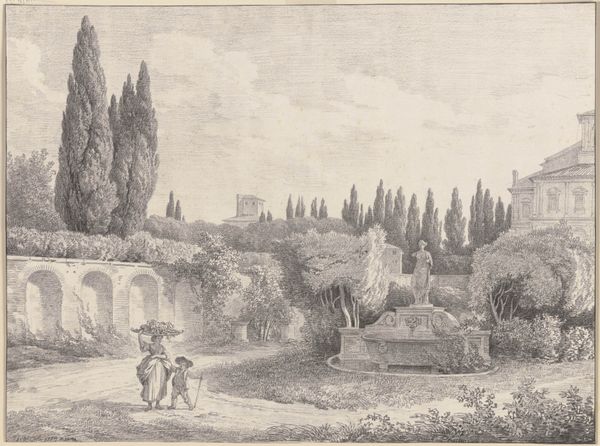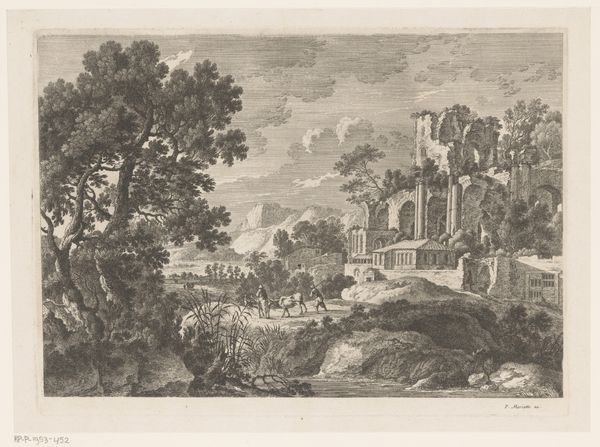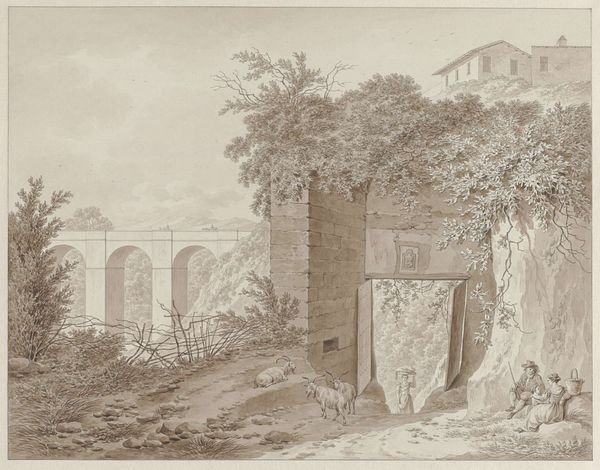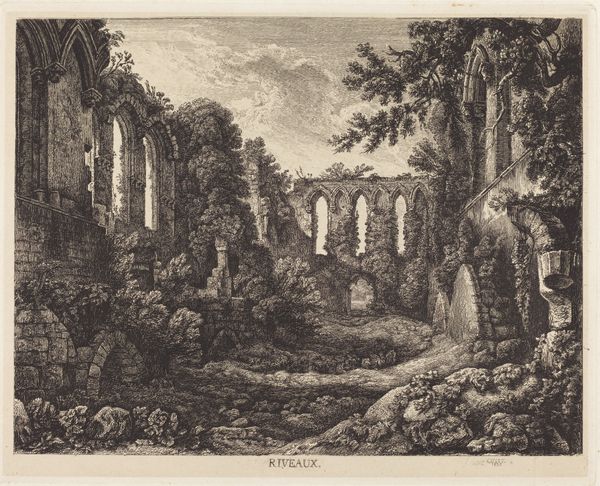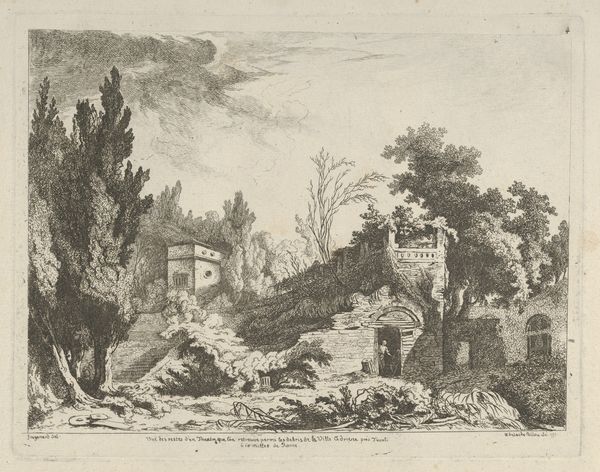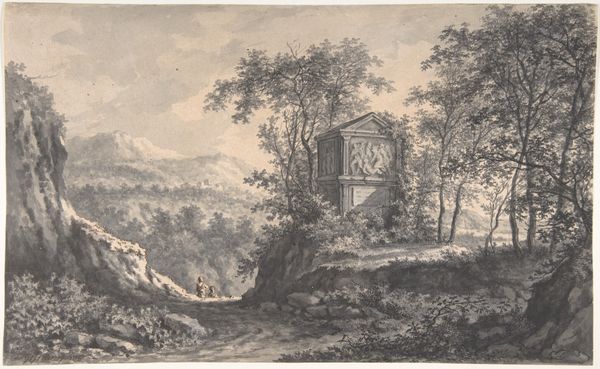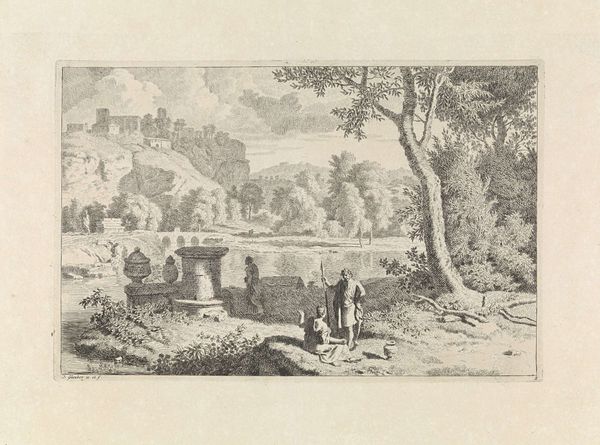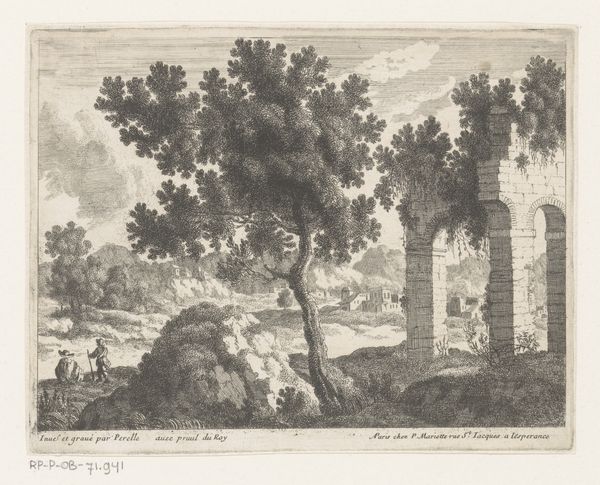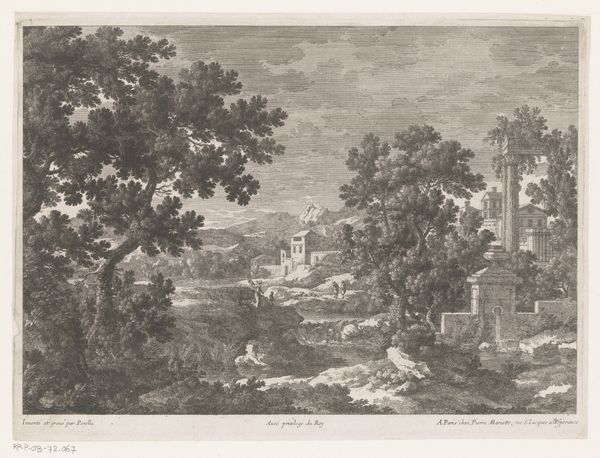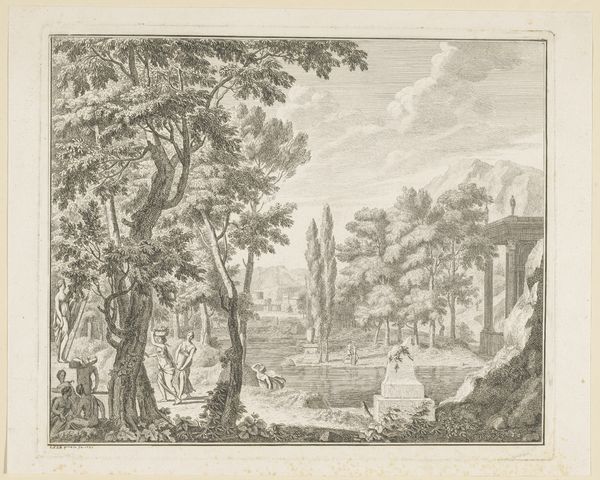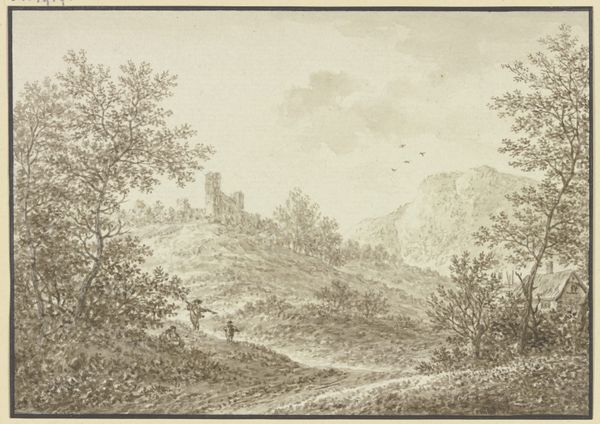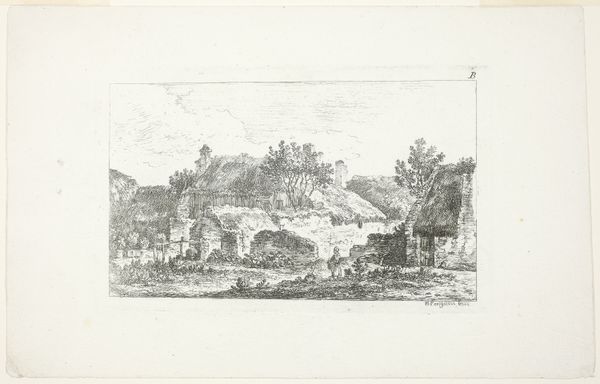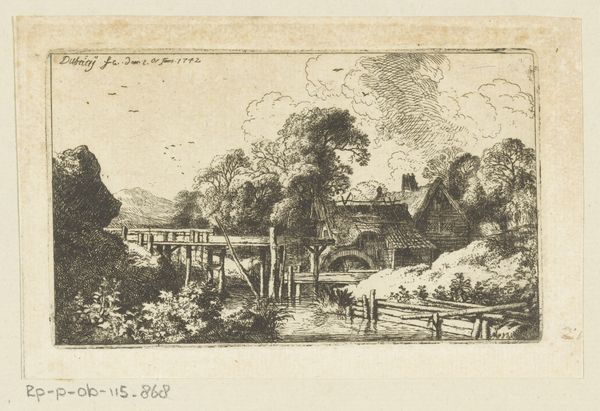
View of the entrance to Tivoli and the walls of the Villa d'Este, horsemen approaching the entrance at bottom center, arched entrance in the middleground, cyrus trees and other plants surrounding 1727 - 1791
0:00
0:00
Dimensions: sheet: 7 3/16 x 9 3/8 in. (18.3 x 23.8 cm) plate: 5 7/8 x 7 1/2 in. (14.9 x 19 cm)
Copyright: Public Domain
Editor: So, this is "View of the entrance to Tivoli and the walls of the Villa d'Este" created between 1727 and 1791, by Jean Claude Richard, Abbé de Saint-Non. It’s a pen and ink drawing, etched. There's almost a dreamy, romantic quality to the Italian landscape, but it’s rendered with such precise lines. What draws your eye in this piece? Curator: I see a conscious effort to frame a specific kind of experience. The Villa d’Este, renowned for its elaborate gardens and water features, was a destination for the elite on the Grand Tour. Consider how Saint-Non presents it. It's not just a depiction of a beautiful place; it's a representation of a culturally sanctioned journey and the consumption of art and history by a privileged class. How might the accessibility of this print influence perceptions of the actual site? Editor: I hadn't thought about the consumption aspect so directly. So the print, by being easily reproducible, brings this elite experience to a wider audience, even if that audience is still relatively privileged? Curator: Precisely. Etchings like this served as souvenirs, reminders of cultural capital acquired through travel. The act of possessing and displaying such prints reinforced social standing and demonstrated an individual’s participation in a specific cultural narrative. Notice how the horsemen at the bottom are not engaging with this elaborate water infrastructure, perhaps they represent the natural counterpart to the artifice of the villa, meant to enhance the grandeur? Editor: That's a great point about the horsemen – their placement and activity adds another layer of meaning I had overlooked! I'm beginning to see how this image isn't just about aesthetic beauty; it's communicating a very specific message about culture, class, and the Grand Tour experience. Curator: It's about understanding the visual vocabulary of its time and its role in shaping societal perceptions. Always look for those clues about social role and perception. Editor: I definitely will. Thanks, that was super helpful!
Comments
No comments
Be the first to comment and join the conversation on the ultimate creative platform.
